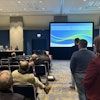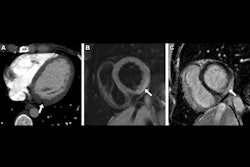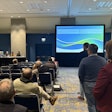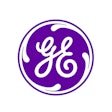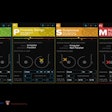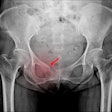
There is a well-understood pathway to reduce lung cancer mortality that is not being fully utilized in the U.S. Numerous studies, dating back as far as 1999 have proven that low-dose CT (LDCT) can be used effectively to screen for lung cancer, and in 2023, I-ELCAP published an especially compelling article showing that the 20-year survival rate for patients enrolled in annual screening and diagnosed with a first primary lung cancer was over 80%.
This is essentially a cure, but even though a cure for many patients is available, screening compliance is only about 16% and only 27% of patients with lung cancer are diagnosed at an early stage.
LDCT can accelerate diagnosis because lung nodules are frequently found by radiologists when they are reading the exam. The vast majority of incidentally and screen-detected lung nodules are benign, but some are early-stage cancers.
On the surface, the solution may seem simple: We need to find more lung nodules. But lung nodules are already found in 40% of Chest CT scans, and AI-powered detection tools, while intended to diagnose cancer early, paradoxically increase the number of nodules requiring triage and tracking. This can lead to increased costs, patient anxiety, and unnecessary interventions for benign nodules -- overwhelming existing nodule management programs and making it harder to identify true malignancies.
Nodule detection paired with improved AI-based characterization of nodules (CADx) promises earlier diagnosis of lung cancer, while simultaneously unburdening beleaguered nurse navigators by shrinking their dashboards and allowing them to be laser-focused on the patients that need them most.
Because the technology is augmentative, not just assistive, CADx tools are currently reimbursed by Medicare (and some private payors) using code 0721T and 0722T. While these codes are somewhat generic, the American College of Radiology (ACR) has produced a Clinical Coding Example for Lung Nodule CADx, giving providers some assurance that billing for this CADx function is appropriate.
More screening and better nodule management can, in turn, lead to increased early lung cancer detection and better patient outcomes. Through the combination of its augmentative technology and revenue generation, CADx is helping to achieve diagnosis early enough to perform a curative surgical procedure in more patients.
This positive effect on program efficiency can result in decreased marginal program costs, making screening and nodule programs self-sustainable. It is our hope as an industry that we can continue to work together with payors and providers to reduce the loss of life caused by the biggest cancer killer.
Chris Wood is CEO of RevealDx.
The comments and observations expressed do not necessarily reflect the opinions of AuntMinnie.com, nor should they be construed as an endorsement or admonishment of any particular vendor, analyst, industry consultant, or consulting group.


